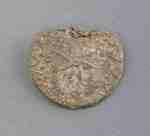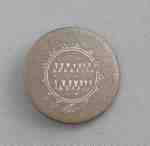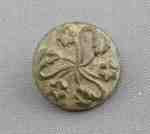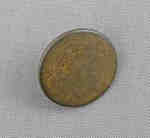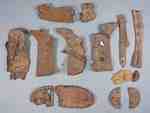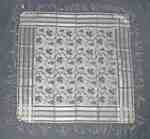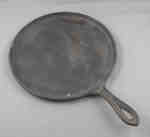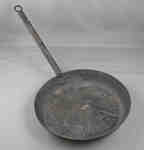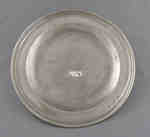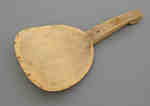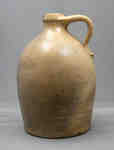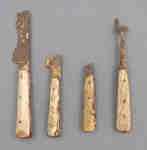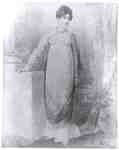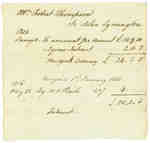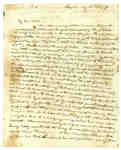Results
- This is a civilian button believed to be from the time of the War of 1812. The design on the face is a thin line star with ornate markings around the edges.This is a civilian button believed to be from the time of …
- This is a civilian button believed to be from the time of the War of 1812. The design on the face is a circle with circles periodically around the outside and lined triangles in the center.This is a civilian button believed to be from the time of …
- This is a civilian button believed to be from the time of the War of 1812. The design on the face includes curved lines from the center that reaches the edge with a leaf or star. On the back there isThis is a civilian button believed to be from the time of …
- This is a promissory note by William Forsyth to James Cummings Esq. in Chippawa dated Falls April 7, 1817.This is a promissory note by William Forsyth to James Cummings Esq. …
- A plain button, believed to be from the 1812 era, that has “Stand(D) Gold Col(R)” inscribed on the reverse.A plain button, believed to be from the 1812 era, that has …
- The Times Newspaper from September 28, 1814 Pages 2 and 3 discuss reports from newspapers around the world, including those of the ongoing war.The Times Newspaper from September 28, 1814 Pages 2 and 3 discuss …
- Leather shoes pieces and straps that were found during an archeological dig unearthed at one of Niagara’s Battlefields.Leather shoes pieces and straps that were found during an archeological dig …
- Ladies’ neck scarf measuring 65 X 65 CM. It is made of white silk and has a leaf design with a striped border design. There are also hand tied fringe around the entire edge of the scarf. It is believLadies’ neck scarf measuring 65 X 65 CM. It is made of …
- This cast iron frying pan has a handle with a hole in the end that is riveted to the pan. The handle is 28cm long x 2 cm wide and the pan is 27 cm in diameter x 4.5 cm deep. This item can currently bThis cast iron frying pan has a handle with a hole in …
- This cast iron frying pan is flat with a patterned handle. This item can currently be found at the Willoughby Museum.This cast iron frying pan is flat with a patterned handle. This …
- This is a pewter plate believed to be from the 1810 home of Jacob Miller. This item can currently be found at the Willoughby Museum.This is a pewter plate believed to be from the 1810 home …
- This is a wooden spoon that would have been used in the kitchen of a home during the early 1800s.This is a wooden spoon that would have been used in the …
- This is a jug said to be from the 1810 home of Jacob Miller. This item can currently be found at the Willoughby Museum.This is a jug said to be from the 1810 home of …
- This is cutlery believed to be from one of Niagara’s Battlefields. This item can currently be found at the Willoughby Museum.This is cutlery believed to be from one of Niagara’s Battlefields. This …
- This is a black and white photograph of a pencil sketch of a woman, circa 1805-1810. There are two theories on who the woman may be. One believes that is Miss Shaw. However, there is another photo ofThis is a black and white photograph of a pencil sketch of …
- This is a letter written to Mr. Cummings (probably Thomas), who was a general merchant in Chippawa during the War of 1812. It explains the theft of various supplies and the names of those involved. TThis is a letter written to Mr. Cummings (probably Thomas), who was …
- This document is a certification that John Mills paid John Axford 7 pounds, 10 shilling, and 6 pence in 1810.This document is a certification that John Mills paid John Axford 7 …
- This document is a sworn statement that John Mills, by order from Mr. Robert Tompson, paid 20 pounds, 2 shilling, and 4 1/2 pence to John Axford.This document is a sworn statement that John Mills, by order from …
- This document is a bill of account from Mr. Robert Thompson to John Symington in the amount of 20 pounds, 1 shilling and 5 pence.This document is a bill of account from Mr. Robert Thompson to …
- This letter was written to Elizabeth Leonard in St. John, New Brunswick from Frances Leonard on July 12, 1814.This letter was written to Elizabeth Leonard in St. John, New Brunswick …
When selecting an individual record or object, you will move
to the website of the heritage institution that houses the item.
To return to the search or results pages, select "Back", "Results" or "New Search".
 This project was made possible with the support of the Department of Canadian Heritage
This project was made possible with the support of the Department of Canadian Heritage
through the Canadian Culture Online Strategy.
to the website of the heritage institution that houses the item.
To return to the search or results pages, select "Back", "Results" or "New Search".
 This project was made possible with the support of the Department of Canadian Heritage
This project was made possible with the support of the Department of Canadian Heritage through the Canadian Culture Online Strategy.






